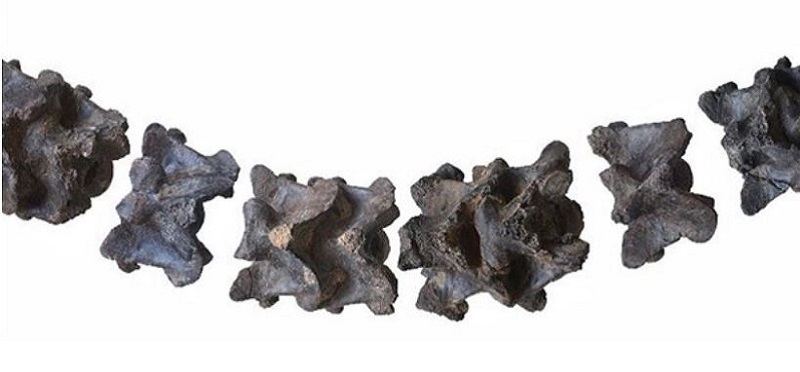
Kutch: The newly identified snake, named Vasuki indicus, lived in the area of present-day Gujarat during the middle Eocene period, about 47 million years ago. It belonged to the now-extinct Madatsoidae snake family, but represented a lineage unique to India.
The discovery of a snake named Vasuki indicus is really surprising. The length of the snake was around 15 metres, which is approximately equal to a school bus. The fossils of this ancient giant were found in the Panandro lignite mine in Kutch, Gujarat. Of these fossils, 27 vertebrae were exceptionally well preserved, some of which were even found fused or connected like jigsaw puzzle pieces, according to a press release by IIT-Roorkee.
When scientists looked at these vertebrae, they noticed something interesting about their size and shape. They suggest that Vasuki indicus had a broad and cylindrical body, indicating a strong and powerful build.
Vasuki indicus is not a snake we are talking about. Its size is comparable to that of Titanoboa, a giant snake that once roamed the Earth and holds the title of longest snake ever known, researchers said.
Researchers believe that the snake was a secretive hunter. Like the anacondas of today, Vasuki indicus probably moved slowly, waiting for the right moment to attack its prey. Its large size would have made it a formidable predator in its ancient ecosystem.
The Vasuki indicus snake is unique and is named after Vasuki, who is often depicted around the neck of the Hindu god Shiva. The name not only reflects its Indian roots but also hints at the rich cultural heritage of the region.
The discovery of Vasuki indicus sheds new light on the biodiversity and evolution of snakes during the Eocene period. It also provides information about the geographical distribution of the Madtsoidae family which was present in Africa, Europe and India for about 100 million years.
Professor Sunil Bajpai, Department of Geology, IIT Roorkee, said this discovery is important not only for understanding the ancient ecosystem of India but also for knowing the evolutionary history of snakes on the Indian subcontinent. "It underlines the importance of preserving our natural history and highlights the role of research in uncovering the secrets of our past," he said.
"This snake is about 4.7 crore years old and we have found the remains of this snake from a coal mine in the Kutch area of Gujarat. This snake is not like other snakes. It is about 15 metres long and it kills its prey completely. The weight of this snake is around 1000 kg," Bajpai added further.
The discovery by Professor Sunil Bajpai and his team follows a recent wave of important fossil discoveries in India. IIT Roorkee's continued contribution to palaeontology research has strengthened India's prominence as a hotspot for important discoveries. The discovery of Vasuki indicus adds to IIT Roorkee's growing list of unprecedented fossil discoveries, reinforcing India's importance in this important discipline. (ANI)







